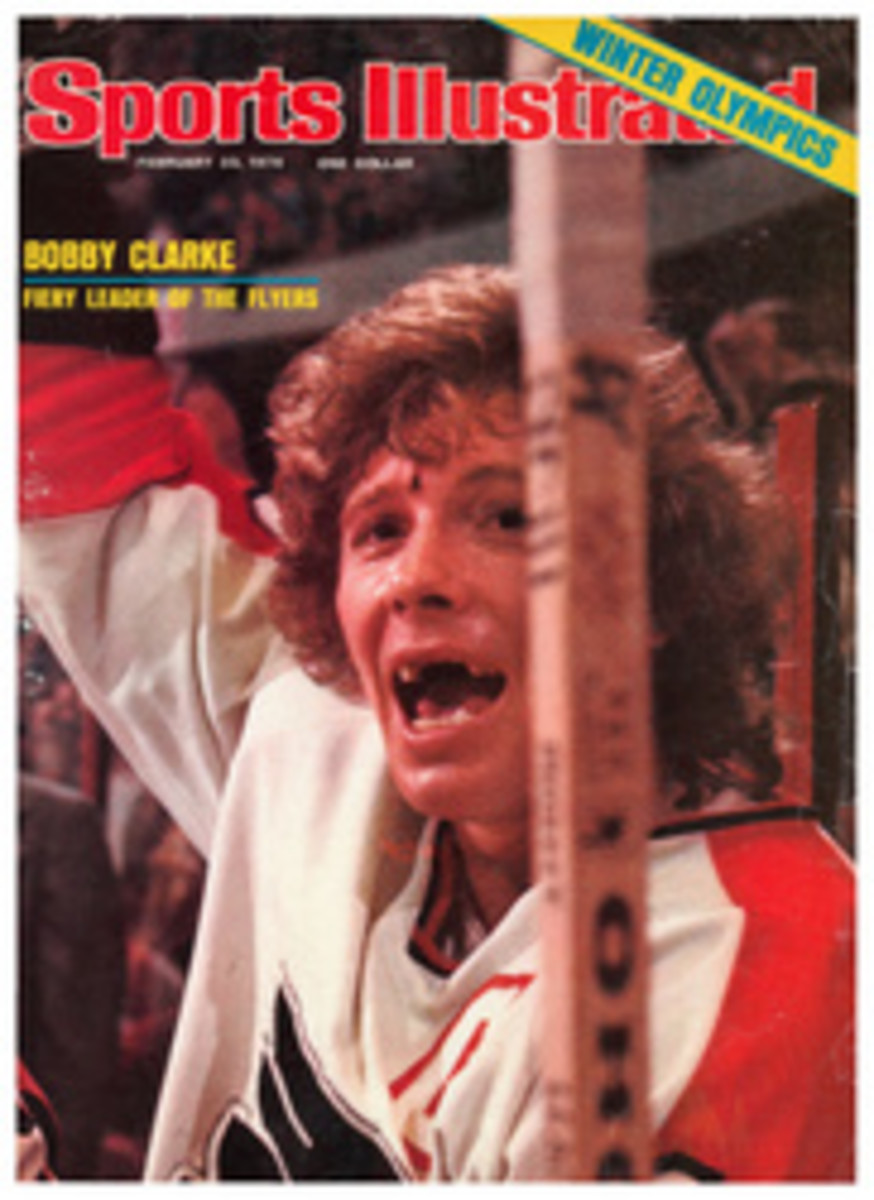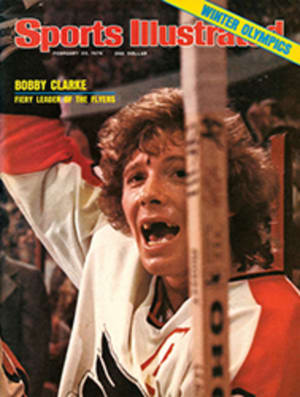
A race that keeps 'em coming back
A man does what he can and he does what he must, and once in a while he does a little bit more. Sometimes he does a lot more, as last weekend's Daytona 500 proved. From the first day of qualifying until the last gasp of the race, from NASCAR's tossing out the qualifying times of the three fastest cars because they stretched its rubber-band rules to the snapping point, to the crazy, crashing, only-in-the-movies finish between the sport's two most successful drivers, David Pearson and Richard Petty, even the spectators got almost more than they could handle.
When the cars stopped spinning, Pearson had won $46,800 in the richest race in stock-car history by seemingly willing what was left of his battered Mercury past Petty's Dodge, which lay crunched on both ends and dead in the dirt just feet shy of the finish line.
Throughout, the 500 had been run as fiercely as if it were a sprint. Altogether there were 36 lead changes shared by 10 cars, but one by one they had all dropped out until only Pearson and Petty were in contention.
With one lap remaining, Pearson was breathing on Petty's bumper. Pearson had never won Daytona; he was hungry. Petty had won five times; he was greedy. The wildest finish in the history of stock-car racing was less than one minute away.
Pearson slingshotted into the lead going down the back straight; Petty came back at him in Turn Three, dropping down on the 31-degree banking to pass. He began to slide back up, and nudged Pearson's door with his fender. And again, through Turn Four. Barely in control, Petty tried to pull ahead, but his right rear fender belted Pearson's left front and, wham-wham-wham-wham, Petty smacked the wall four times and spun down onto the apron within spitting distance of the checkered flag. Pearson was knocked headfirst into the wall—hard—and he spun toward pit row, where he clipped a car pulling in.
But there was the difference in how the two drivers handled their wild spins. Pearson pushed in his clutch and kept his engine running; Petty did not. Pearson jammed the Mercury in gear and chugged across the finish line the winner. After a push by his crew, Petty coasted across for second place, jumped out of his car and stuck his head in Pearson's window and apologized.
There were some who felt that it sure was a sloppy way for the world's two best Grand National drivers to finish the world's best stock-car race. "Yeah. I guess it was," said Petty. "But there will be 100,000 more people here next year."
He may well be right, considering that what had gone on earlier in the week only made the dizzying finish seem apropos.
Unlike Indianapolis, where teams have a full month for testing new cars, practice and qualifying, everything at Daytona is compressed into a seven-day period with the pre-race pressure peaking on the Thursday before the 500 in two 125-mile qualifying races. Traditionally those events have produced the fiercest racing to be seen on the 2.5-mile tri-oval, since they are too short for any strategy beyond foot-to-floorboard driving. At stake is a good spot on the 42-car grid, the two-car front row of the 500 having been determined in one-lap time trials held four days earlier. But since the 125s are the first superspeedway races of the season, teams also use them to flaunt the secrets they have discovered over the winter, or to mislead each other as to what those secrets are. Usually it's a game of hype-the-rumor-and-hide-the-fact restricted to racers only, but after many years of just watching, last week NASCAR officials seem to have decided it was time for them to play, too.
Cheating, as outlined in the unwritten NASCAR Code of Conduct, is a subject that is at best nebulous and at worst about as consistent as the weather in Daytona in February, which usually changes twice a day. The tacit definition goes something like this:
Cheatin': The only kind that counts is the downright kind. A driver or mechanic may usually break most of the rules a little bit, but it is not cheating unless he has broken the wrong rule at the wrong time by too much. If the officials decide to catch him, they will. Maybe they won't do much. But maybe they will, depending on what kind of mood they happen to be in.
The latest round in this policy of capricious enforcement definitely went to the officials. Victim No. 1 was A. J. Foyt, seemingly sitting safely on the pole after a scorching time-trial lap of 187.477 mph when along came NASCAR Competition Director Bill Gazaway and his team of tear-down artists. As Gazaway hove into view one could imagine beads of perspiration popping out under the brim of the baseball cap worn by Hoss Ellington, chief mechanic for Foyt's Chevelle.
"Hello there, Mr. Gazaway, sir, what seems to be the trouble?"
"You goin' too fast, boy, is what seems to be the trouble. I think me an' my boys here may just have a little look-see under that hood of yours...and while we're at it we may just peek in the trunk and under the seat and maybe even inside the body panels and roll-bar tubes."
"Ulp."
Two hours later Gazaway had found the goods: a steel bottle. It had once held nitrous oxide, laughing gas, commonly used as an anesthetic. When N[Sub 2]O is injected into an engine's intake manifold, it can provide a brief but potent boost in horsepower. It's illegal without a prescription in most places outside of a dentist's office. The front straight at Daytona is not one of the places where it's legal. So much for Foyt's $5,000 pole-position prize.
Realizing he had uncovered some cheatin' of the downright kind, Gazaway sauntered over to the second-fastest car, Darrel Waltrip's Chevelle, sponsored by Gatorade. There he found another empty bottle, and it sure hadn't contained Gatorade. So much for Waltrip's $5,000, which he had inherited after the ruling on Foyt's car. On to the third-fastest car, a Dodge driven by Dave Marcis; no N[Sub 2]O, but an aluminum flap over the radiator that chief mechanic Harry Hyde had installed to keep the engine warm on cold days. Such covers are not normally allowed because they improve front-end aerodynamics, but NASCAR had bent that rule itself on the chilly qualifying morning by permitting half the radiator to be covered. Still, Gazaway decided an aluminum flap wasn't exactly what he had had in mind, and Marcis' time was thrown out with the other two. So much for his $5,000. "What difference does it make whether you block the radiator with dirty T shirts, dead dogs or horse manure?" said Marcis' crew chief.
Suddenly the fastest qualifier was USAC's stock-car champ, an Iowa bean farmer named Ramo Stott. His Chevelle hit 183.456 mph and passed Gazaway's inspection about as quickly. "That only proves that Ramo's team is the best at cheating," said one driver. That is a compliment. Peer respect is the reward for a mechanic who slips something past inspection.
Getting anyone to admit he's guilty of cheatin' is another matter. Even the word "cheat" triggers a reflex-action sly grin, followed by a jerk of the forearm with the thumb pointing over the shoulder at the guy in the next garage, who reacts the same way, until the questioner eventually finds himself facing the men's-room door.
Ask A. J. Foyt. "I don't work on the cars, I just drive 'em," he said with a grin. Yeah, but who pushes the N[Sub 2]O button? Thumb over shoulder.
The three disallowed cars later passed inspection, and in practice they were still the fastest although ineligible for the pole. They were forced to start near the back of the pack in the 125-mile qualifying races, which didn't prevent Marcis and Waltrip from winning. "Justice has prevailed," quipped Waltrip.
In the first of the two qualifying sprints Stott was left at the grid with a dead battery—pole sitters rarely bother to go more than a couple of laps in the qualifying races they are forced to run—and after Marcis pitted under a yellow flag to repair a jammed gear lever, the stage was set: Marcis chasing Buddy Baker's Ford and Pearson's Mercury. In the closing laps he passed them both on the inside of Turn Three, one lap apart, and won by half a car length.
Foyt was never in contention in the second heat. The ignition timing on his brand-new McLaren-built engine went off on the pace lap and caused a piston to burn. Waltrip won that 50-lapper easily. He pitted for gas early in the race under a caution light, knowing his Chevelle could go the remaining distance—barely—and hoping that Petty, sporting a beard and 15 pounds underweight after a 10-day hospital stay for treatment of an ulcer, would be forced to fuel under a green flag. Waltrip guessed right, which spelled the 23-second difference between him and Petty.
Three days later, however, the cheat-cheat-never-beat moralists would have their moment. As Petty and Pearson staged their Keystone Kops finish in front of the 125,000 spectators, mechanical troubles had long since sidelined Foyt and Waltrip, and Marcis was struggling along, 220 miles behind.
PHOTO
DAVID PEARSON KEPT RUNNING AND WON
PHOTO
RICHARD PETTY LOST FIRE AND FIRST

